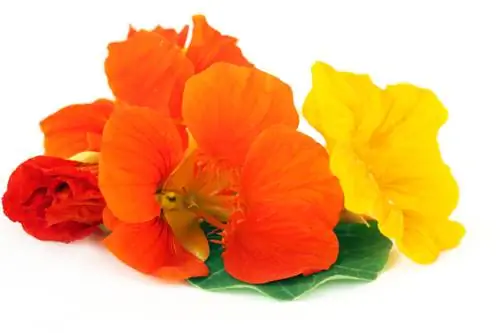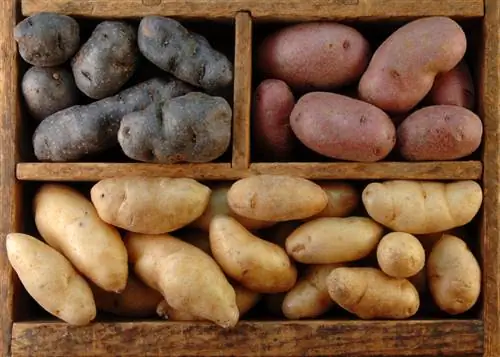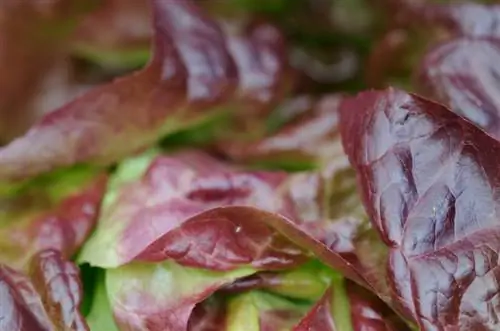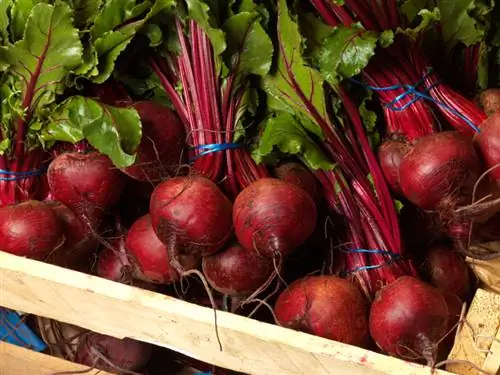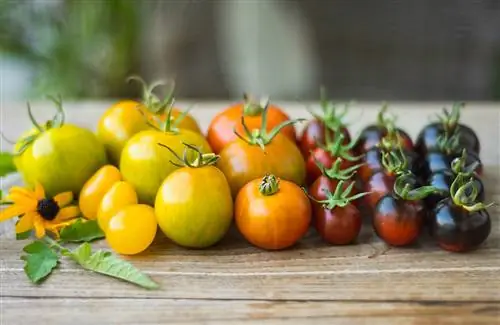- Author admin [email protected].
- Public 2023-12-16 16:46.
- Last modified 2025-01-23 11:20.
Nasturtium is actually a genus of plants. These include several ornamental species and also the edible variety, which is usually what is meant when one speaks of nasturtiums. The creeping or climbing annual to perennial plants are very decorative.
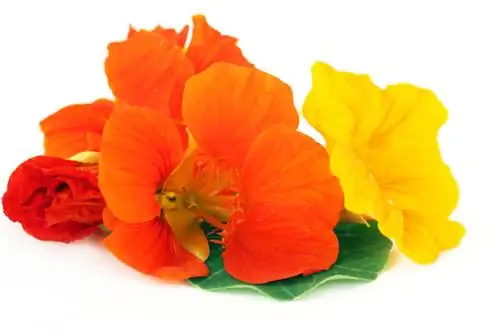
What varieties of nasturtium are there?
There are about 90 species of nasturtium, with the large nasturtium being the best known. The varieties differ in their growth habits (creeping or climbing), lifespan (annual or perennial), use (ornamental or commercial plant), leaf size and shape, and flower colors (yellow-orange, salmon-colored, white or red-purple).
There are about 90 species of nasturtium. The best-known species is probably the large nasturtium, an edible variety whose buds are used as a substitute for capers. This variety is also used in medicinal herbalism. There it is mainly used for diseases of the upper respiratory tract or urinary tract infections. The tuberous nasturtium is also considered a useful plant; it is grown as a food plant in South America.
The nasturtium originally comes from Central and South America. There it is mainly native to the mountainous regions. Many species can now be found as ornamental plants in temperate climates around the world. The so-called lotus effect of their leaves is particularly impressive: water rolls off in drops and cleans the surface.
How do the varieties differ?
In the seed trade you can mainly get different annual varieties in various colors and adapted to different needs. In addition to the traditional yellow-orange flowers, you can also choose from salmon-colored, white or red-violet flower colors. The leaf shape and size also varies from variety to variety, as does the growth habit of the plant. You can find nasturtiums for a large garden bed as well as for the small flower box on the balcony.
With the large nasturtium you can also make shady areas of your garden bloom. Although it actually loves the sun, it still thrives there. It is ideal as a ground cover because it grows quite quickly and lushly. Slightly smaller-leaved varieties brighten up bare fences or grow on trellises.
The most important distinguishing features:
- annual or perennial
- Ornamental plant or useful plant
- crawling or climbing
- Leaf size and shape
- Bloom
Tips & Tricks
Not only the buds and flowers of the large nasturtium are edible, but also the young leaves. With their slight spiciness, they refine salads or serve as a bread topping.

